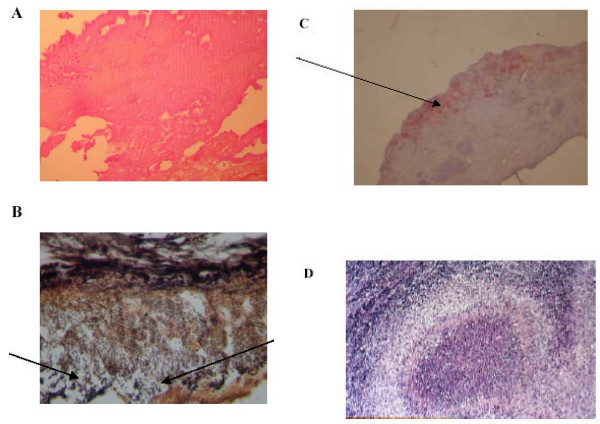Figure 1.
Valve of our patient with B. henselae endocarditis. Resected valve with B. henselae infection showing large and non-inflammatory vegetation on the valvular surface (A, hematoxylin-eosin, original magnification × 100). The diagnosis of vegetation was made by the presence of fibrinous material with numerous darkly stained bacilli (arrows in Figure 1B) consistent with Bartonella, organized in numerous clusters (B, Warthin-Starry silver staining, original magnification × 400). The bacteria (arrows in Figure 1C) are detected by immunohistochemical analysis in an extracellular location inside the valvular vegetation (C, polyclonal antibody anti-B. henselae with hematoxylin counterstain, original magnification × 200). Resected lymph node showed a necrotizing lymphadenitis. Numerous microabscesses composed of fragmented neutrophils were observed in homogenous necrotic areas. Necrotic regions were surrounded by a ring of macrophages and epithelioid histiocytes to form stellate inflammatory granulomas consistent with cat-scratch disease (D, hematoxylin-eosin, original magnification × 100).

